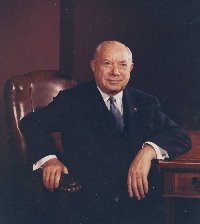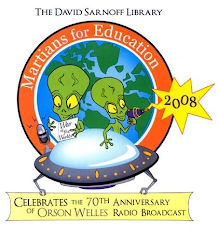GET REALLY WIRED MUSIC FOR THE HOLIDAYS
The Electro-Music Chamber Orchestra Comes to Princeton
December 15, 2007 Sarnoff Corporation Auditorium
7:30 PM 201 Washington Rd
Princeton NJ 08540-6449
Admission $10 per person at the door
For information: 609-734-2636
It’s the time of year when the streets and houses glow and twinkle with festive lights. Everything’s wired and bright, including the Electro-Music Chamber Orchestra, the sonic ensemble that’s more plugged in than a city block.
The Electro-Music Chamber Orchestra brings its arsenal of synthesizers, keyboards, and bizarre machinery to the David Sarnoff Library Auditorium On Saturday, December 15th for an evening of truly electrifying and sonorous musical mischief. Doors open at 7:00 PM for this rare event, with refreshments on hand provided by Grovers Mill Coffee and McCaffrey's bakery, thanks in part to the support of the Princeton ACM/IEEE-CS under the initiative of Dr. Rebecca Mercuri. Admission is $10.00 for the general public; online advance purchases can be made via Paypal at sales@davidsarnoff.org. For more information, please call 609-734-2636.
On the roster for the orchestra’s evolving membership are Howard Moscovitz, Greg Waltzer, and Bill Fox. As a trio in their own right, they’re known as Xeroid Entity, creators of rhythmic and ambient otherworldly soundscapes. http://xeroid-entity.com/
Joining them will be special guests Brainstatik, featuring Robert Burger, Ken Palmer, Mike Hunter, Jim Silvestri and Glenn Robitaille. Combining ambient, world, progressive rock, and space music, Brainstatik takes audiences on uncharted improvisational journeys,shifting and mixing genres within each piece.
Any self-respecting electronic chamber orchestra would be incomplete without the granddaddy of all electronic instruments: the theremin, the only instrument that’s played without being touched. Thereminist Kip Rosser will be on hand to weave the theremin’s haunting and beautiful voices into the mix. http://www.performancekr.com
Taking the stage first will be Brainstatik, each member a certified electronic gear junkie. Guitars can sound like drums, keyboards can imitate guitars and drums can play keyboards. The resulting performance often sounds rehearsed and composed, but in reality it happens in the moment. Brainstatik thrives on taking its music to the edge every time they perform.
During the second set of the evening, Moscovitz, Waltzer, Fox, and Rosser will complete the ensemble. The full Electro-Music Chamber Orchestra will perform a collaborative exploration of the vast territories of harmony, rhythm, melody and silence. Think Vangelis meets sci-fi with a dash of Brian Eno.
The evening will be set against the stunning visual backdrops of video artist Hong Waltzer, who will bridge sight and sound by creating her fluid and colorful “living paintings” that respond to the music in real time. Expand your ears, eyes, mind, and your definition of music–get really wired on the sight and sounds of the Electro-Music Chamber Orchestra.


